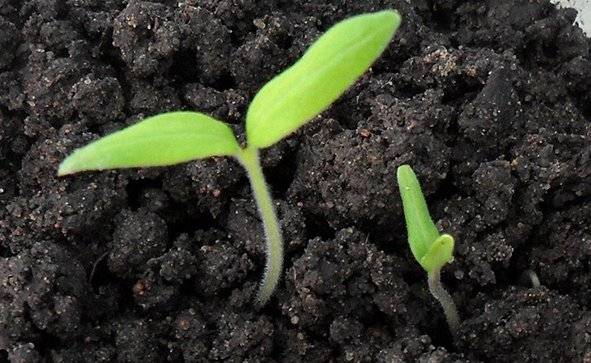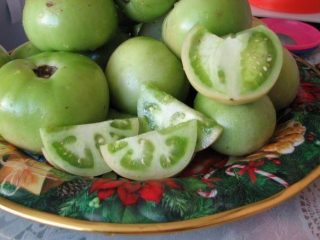Content
Gardeners who know a lot about tomatoes grow not only red, but also yellow varieties on their plots. The fruits of these types of tomatoes contain little liquid, so they consist of almost 95% pulp. In addition, yellow tomatoes are especially rich in vitamin A, which mainly determines their color. Let's take a closer look at the representatives of this unusual tomato using the example of the Honey Drop variety.
Description
The Honey Drop tomato is a representative of the indeterminate variety. A distinctive feature of this species is the small size of the fruit. It is thanks to this property that the variety is considered one of the popular cherry tomatoes today.
The “Honey Drop” tomato is intended for growing both in a greenhouse and in open ground. The manufacturer's description on the package with seeds indicates that when planting a plant in a greenhouse, its length varies from 1.5 to 2 m. In the garden bed, the size of the bushes is slightly lower - from 1.2 to 1.5 m.
The fruits, as you may have noticed in the photo, are small.The weight of one vegetable is only 12-15 grams. The fruits are bright yellow and pear-shaped, resembling a drop. It is thanks to its shape, color, and taste that the tomato got its name.
The productivity of the variety is high. Tomatoes hang from the plant in large clusters, with which, judging by reviews, the particularly tall bush is densely strewn from top to bottom.
In cooking, the fruits are actively used for food in raw form, as well as in the form of vegetable salads. The small size of the fruit makes the Honey Drop variety especially convenient for whole-fruit canning and pickling.
Features of cultivation and care
Growing a “Honey Drop” tomato, like any other type of tomato, involves sequentially performing the following steps:
- Sowing seeds and growing seedlings.
- Planting plants in the ground.
- Regular and proper care of tomatoes, as well as timely harvesting.
Let us consider all the above positions in more detail regarding the “Honey Drop” variety.
Sowing seeds and growing seedlings
Seeds of the Honey Drop variety have good germination. The optimal period for sowing is the end of March.
Seeds are sown in previously prepared and moistened soil. The seed is placed to a depth of 1-2 cm. Then the container with the newly planted seeds is covered with a layer of film and placed in a warm place.
The first shoots of the Honey Drop variety appear after 1-1.5 weeks. After the true leaves appear, the plants can be pruned. Picking is necessary for further proper growth of the bush and effective fruiting.
This is necessary for the development and growth of lateral roots, which leads to the development of the root system and, as a consequence, the entire plant as a whole.
Planting plants in the ground
The “Honey Drop” variety, according to its main characteristics, can be planted both in a greenhouse and directly in the garden bed. The planting location is selected based on the individual preferences of the vegetable grower, as well as the climatic characteristics of the region.
To do this, the bushes with tomatoes are first taken outside for several hours, and then, after a couple of days, left in the fresh air for the whole night.
Seedlings are planted after spring frosts, usually at the end of May. Plants are planted according to the 40x70 pattern in preheated soil (when planting in a greenhouse) and relatively low air humidity.
Regular proper tomato care
Caring for the Honey Drop tomato variety includes:
- timely watering;
- regular loosening of the soil and removal weed;
- feeding the plant;
- constant garter of the bush as it grows;
- regular removal of side shoots and foliage to shorten the ripening period and improve the taste of the tomato;
- timely harvest.
Advantages and disadvantages of the variety
Among the main advantages of the Honey Drop tomato:
- good germination of planting material;
- resistance to disease;
- high productivity;
- excellent taste;
- high sugar and carotene content in fruits.
The only disadvantages that should be highlighted are:
- the tallness of the bush, which causes a number of inconveniences and requires mandatory staking of the plant;
- regularity of watering, loosening and feeding the plant.
All of the above disadvantages are more than compensated for by the richness of the tomato harvest, which makes the “Honey Drop” variety one of the most popular among gardeners.
Pests and diseases
The variety is resistant to a number of diseases characteristic of most tomatoes. Despite this, you should not neglect preventive measures and be prepared for any developments.
The climatic features of the region can both help and harm the plant, so we will consider a number of major diseases to which the “Honey Drop” can be exposed.
Late blight
This disease, characteristic of most tomatoes, can affect plants grown in a greenhouse. The development of this disease is associated with high humidity and cramped conditions for plant growth and development. In open ground conditions, plants get sick less often.
To prevent the occurrence of the disease, plants should be pre-treated and visual monitoring of the condition of each bush should be carried out regularly.
In order to prevent pest invasion, the soil should be mulched and systematic ventilation and spraying procedures should be ensured.
You will get even more information about growing tomatoes in a greenhouse after watching this video:
“Honey Drop” is a unique variety of tomatoes with high yield, good disease resistance and excellent taste. This variety will appeal to anyone, even the most fastidious gardener.
















